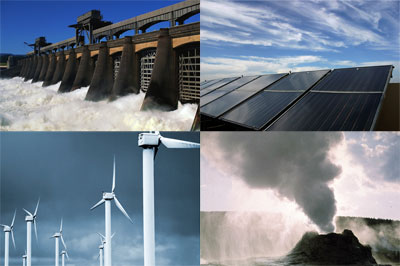Federal budget cuts likely to affect renewable energy projects

Several major renewable energy projects are planned for California, including a grid-scale concentrated solar plant (CSP). They are part of the big push towards meeting California’s ambitious goal of 33% renewable energy by 2020. But, many renewable energy projects are backstopped by the federal government with loan guarantees, and they also receive tax credits as well as benefit from federal research and development funding.
All this is now threatened, and could seriously impact renewable energy in California
The debt ceiling agreement mandates spending cuts. The Environmental Protection Agency and the Department of Energy will almost certainly suffer major cuts as they are particular targets of most conservatives. These cuts will certainly impact R&D and loan guarantees. Tax credits may well come under scrutiny too. This means that expected money may not be there by 2013, when the cuts start. However, current projects are still being approved and built, and their loan guarantees and tax credits presumably are not in danger.
Brightsource, a startup located in Oakland, just filed to build a huge CSP plant in Inyo County near the Nevada border. It will be a grid-scale 500 MW tower, enough to power 178,000 homes. The tower will be taller than other CSP plants, which means the mirrors, which are powered by heliostats, are much closer to the tower, thus cutting down on land use. It will store excess heat in molten salt so it can generate power even when the sun isn’t shining.
FirstSolar and SunPower have learned to work with environmentalists in their bid to build two equally large solar photovoltaic plants in the Carrizo Plain of San Luis Obispo County. By all accounts, they went way beyond what they were required to do, buying an additional 9,000 acres that will never be developed, and agreeing to remove fences to make it easier for wildlife to move, and not use toxic rodent control. In effect, says GigaOm, they signed a peace treaty with environmentalists, something we could certainly use more of.
PG&E has signed an agreement to buy power from a proposed 163 MW wind farm in Tehachapi, CA, which should be completed by next year.
Not all sources of renewable energy are viable, though. Federal regulators have canceled permits and funding for wave power off the Sonoma County coast. The promise of wave power is continually on the horizon but never seems to get closer. The ocean is a punishing place and as yet there are no wave power plants beyond test phase. Tidal power is in somewhat the same situation. No one has yet figured out how to do either reliably at grid scale, at a reasonable cost.
California renewable energy will likely be adversely affected by federal budget cuts. The only question is, by how much?




